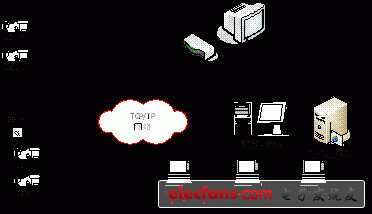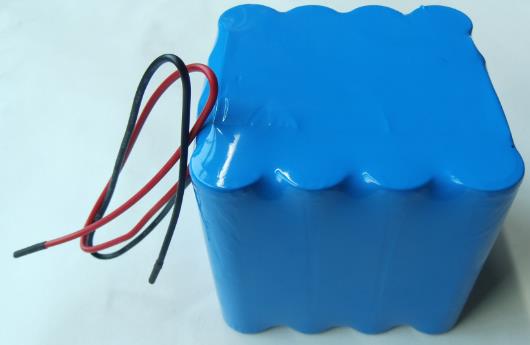The network camera is a new generation product combining traditional camera and network video technology. In addition to all the image capturing functions of the general traditional camera, a digital compression controller and WEB-based operating system are also built into the machine, which makes the video data compressed and encrypted After that, it is sent to the end user through the local area network, Internet or wireless network. The application of network cameras has made a qualitative leap in image monitoring technology. First, the integrated wiring of the network replaces the traditional video analog wiring, realizing the integration of the true three networks (audio, video, data), the network camera is plug and play, the project is easy to implement, and the system is easy to expand; second, the cross Regional remote monitoring becomes possible, especially with the Internet, image monitoring has no distance limitation, and the image is clear, stable and reliable; third, image storage and retrieval is very safe, convenient, remote storage, multi-machine backup storage and fast nonlinear Find etc.
The following is a typical topology diagram of the application of network cameras in video surveillance:

1. Technical structure of network camera
As you can see, the network camera can be directly connected to the digital network of TCP / IP, so the main function of this system is to transmit video and audio through the Internet or internal LAN on the Internet. In terms of internal structure, the basic structure of the network camera is generally composed of image sensors, video encoders, network servers, external alarms, control interfaces and other parts.
Compared with traditional analog cameras, the core technology of network cameras is the video encoder. Now, let's do a technical analysis of each part of the network camera, and then focus on the core video encoder part.
Image sensor: The traditional analog camera is to collect video information through the image sensor, and then directly output the analog video signal, and output it externally through the video cable. There are currently two main types of image sensors for cameras, namely CMOS and CCD. Since CCD has certain advantages over CMOS in image quality, the image sensors used in monitoring projects are mainly CCDs, and most of the mainstream CCD manufacturers are Japanese companies, such as Sony, Sharp, etc., which almost occupy the global CCD market. More than 90% share.
Video encoder: Its function is to digitally encode the CCD video signal according to a certain format, some directly capture the BT.656 signal output by the CCD, and some collect analog signals output by the CCD driver and simulate through a video AD Digital transformation. There are many standards for video encoding, and now the main network camera standards are MJPEG, MPEG4 and H.264.
Network server: Its function is to output the compressed video signal through the TCP / IP protocol, and basically support the current mainstream communication format, such as supporting PPPOE, DNS, UDP, TCP and so on.
The external alarm and control interfaces are the auxiliary functions of the network camera, which are mainly realized through serial ports or IO ports. The methods of serial ports include RS232 and RS485.
Low temperature lithium battery refers to the working temperature under - 20 ℃,to meet different environment and temperature. YFJ company has designed a lot of this kind of Low Temperature Battery with our own advantages.
1.Dual IC chips, that can anti-shortcircuit, anti-overcharger, anti-overcurrent, anti-overload
2.Widely using temperature range, lower temperature Lithium Battery can be operated in -50°C~+60°C
3.Long
cycle life, more than 500 charge/discharge cycles (0.2C)( 80% capacity remained
). more than 800 times(0.1C charge/discharge
4.The Battery Pack has a high cycle life, which conforms
to the values of low carbon, energy saving and environmental protection
Low Temperature Lithium Battery
Items specification
Charge voltage: 16.8V
Nominal voltage: 14.8V (4S4P)
Initial impedance: 200mΩ
Nominal capacity: 10Ah
Minimum capacity: 9.8Ah
Low-temperature capacity : ≥7.0Ah When the battery is standard charged, it shall be put into chamber at ( -40±2 )℃ for 8-16hrs,then discharged at 0.2C(2A) constant current to10.0V.
Charge current : Standard Charging::0.2C5A (2A)
Rapid charge:1.0C5A C(10A) Max
Charging time : Standard Charging:6.5hours(Ref.)
Rapid charge: 2.5hours(Ref.)
Max.discharge current : 10A(1C5A)
Discharge cut-off voltage : 10.0V
Shelf life : 2 years
Cycle life (0.2C5A/0.2C5A) : 500 times,≧80%DOD; 500 times, ≧80%DOD
Operating temperature : Charging: 0℃~45℃ Discharging:-40℃~+60℃

Low Temperature Lithium Battery
Low Temperature Lithium Battery,Low Temperature Battery,Low Temperature Lithium Ion Battery,Low Temperature Rechargeable Battery
YFJ TECHNOLOGY (HK) CO.,LIMITED , http://www.yfjpower.com